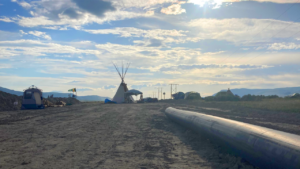More Than Half of U.S. Rivers in Trouble
More than half of the country's rivers and streams are unable to support healthy populations of aquatic insects and other creatures, a survey of nearly 2,000 locations by the Environmental Protection Agency reported Tuesday.
More than half of the country’s rivers and streams are unable to support healthy populations of aquatic insects and other creatures, a survey of nearly 2,000 locations by the Environmental Protection Agency reported Tuesday.
The study found more than 55 percent of the rivers and streams “in poor condition, 23 percent in fair shape, and 21 percent in good biological health,” The Associated Press noted. High levels of nutrient pollution — phosphorous and nitrogen from farms, cities and sewers — were found in the waterways. Phosphorous was found in 40 percent of rivers and streams.
Land development along waterways was found to have enabled erosion, flooding and the introduction of pollutants as well.
“This new science shows that America’s streams and rivers are under significant pressure,” said Nancy Stoner, acting assistant administrator of the EPA’s water office. “We must continue to invest in protecting and restoring our nation’s streams and rivers, as they are vital sources of our drinking water, provide many recreational opportunities and play a critical role in the economy.”
— Posted by Alexander Reed Kelly.
Your support matters…The Associated Press via The Washington Post:
Conditions are worse in the East, the report found. More than 70 percent of streams and rivers from the Texas coast to the New Jersey coast are in poor shape. Streams and rivers are healthiest in Western mountain areas, where only 26 percent were classified as in poor condition.
The EPA also found some potential risks for human health.
In 9 percent of rivers and streams, bacteria exceeded thresholds protective of human health. And mercury, which is toxic, was found in fish tissue along 13,000 miles of streams at levels exceeding health-based standards. Mercury occurs naturally but also can enter the environment from coal-burning power plants and from burning hazardous wastes.
Independent journalism is under threat and overshadowed by heavily funded mainstream media.
You can help level the playing field. Become a member.
Your tax-deductible contribution keeps us digging beneath the headlines to give you thought-provoking, investigative reporting and analysis that unearths what's really happening- without compromise.
Give today to support our courageous, independent journalists.






You need to be a supporter to comment.
There are currently no responses to this article.
Be the first to respond.